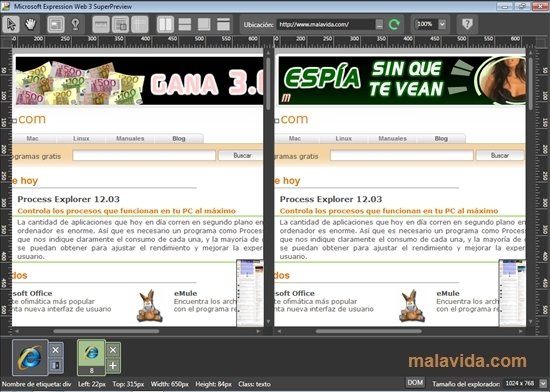

- Microsoft expression web windows 10 how to#
- Microsoft expression web windows 10 update#
- Microsoft expression web windows 10 code#
- Microsoft expression web windows 10 download#
After six years in the Microsoft camp and the release of Front3, the editor had evolved to be closer to the Visual Studio style. The EditorįrontPage primarily had an HTML editor, with some provision for JavaScript and CSS. I rely on EW's handling of projects and, for now, do not want to walk away from it. It is vastly better than using a standalone editor with no project context and there are a lot of such programs. This is simple project management but it has proven itself for as long as I've been using FP/EW. For straight HTML/CSS/JS sites (i.e., not heavy PHP), EW4 understands that a CSS file applies to a given page, can preview the page, and can open files by clicking on their links in other files. More important, FP/EW know the scope of a project and can thus perform operations (such as searching) within that strict context. The single-folder organization is helpful because backups and archives are as simple as they could be. For FP/EW, a project is contained in a single folder. The collection of files represents a project. As a simple example, an HTML file may reference a CSS file or a JavaScript file. Project ManagementĪ Web site is a collection of files that are interrelated. I could easily adopt one of the popular template systems or build my own. With a dynamic system, the work is done in real time, on every served page. It has a singular advantage over truly dynamic template systems (e.g., Smarty) in that all the template work is done with EW4, at "compile" time.

This may seem old-fashioned but it is very simple and very effective. And that means the primary use of the template is to create new pages when necessary. This means the template changes very rarely. Changes to the menu are made to that file, not the template.
Microsoft expression web windows 10 code#
Instead of placing all the code for a main menu into the template, the template includes a PHP file that contains the code needed to emit the menu. It is also the case that my DWTs do not have a lot of content. It is back-end CMS code that determines the content of the page at any given time. For example, product X and product Y are displayed using the same page. A site with hundreds of product pages actually has one or sometimes two actual PHP-driven, template-attached pages that serve all product-related pages. Why? Because the sites I build are driven by a content management system (CMS). A more typical number is 25, sometimes less.

The truth is that the sites I build don't have hundreds of pages. The same is true for uploading ten years ago I had DSL and now I have FIOS, 100 times faster.
Microsoft expression web windows 10 update#
The update process is dependent on the speed of the developer's computer ten years ago that would have been painful for a site with several hundred attached pages but today it's a minor inconvenience. A template change means that each page must be updated and then uploaded to the live site. The key disadvantage of this kind of template comes with sites having a very large number of attached pages. It's a very simple idea - pages are attached to templates and whenever the master template is updated, so are all the attached pages.
Microsoft expression web windows 10 how to#
Despite the name, DWTs are static templates that EW4 knows how to manage. I am using a feature introduced in FrontPage (FP) 2003 called Dynamic Web Templates (DWT), a feature also supported to this day by Adobe Dreamweaver. Am I somehow locked into using Expression Web? Is that the reason I'm still using it? Dynamic Web Templates Let's get one thing out of the way right away. Most PHP developers will consider it heresy that I'm not using a "serious" tool, like JetBrains' PhpStorm IDE, to do my work.
Microsoft expression web windows 10 download#
(As of July 2020, the download was removed from Microsoft's site but can be found at the WayBack Machine.) Upon its demise, Expression Web 4 (EW4) was posted on Microsoft's Web site as a free download and is still there. Microsoft's Expression Web product, the descendant of Vermeer Technology's FrontPage Web site editor, was discontinued nearly five years ago.


 0 kommentar(er)
0 kommentar(er)
